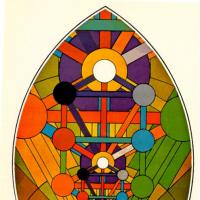Postitused: 10
Keel: English
furrykef (Näita profiili) 26. märts 2009 0:52.17
Ĉu persiko estas ruĝa?
Jes, ĝi estas kaj ruĝa kaj dolĉa.
Ĉu ĉerizoj estas brunaj?
Ne, ili estas nek brunaj nek nigraj, sed flavaj.
I'm a bit confused because in the first sentence, "persiko" isn't taking the article, so it sounds like, "Is a peach red?", which doesn't make much sense to me unless it's a question about peaches in general... but wouldn't it be "Ĉu la persiko estas ruĝa?" in that case?
Then the question about cherries has the same apparent problem, now even more confusing because the answer seems to imply that cherries are generally yellow.
The only other possibility that crosses my mind is "Is this peach red" or "Are these cherries yellow?", but wouldn't those sentences take a demonstrative adjective?
Can anybody shed some light on this? ^^;
- Kef
erinja (Näita profiili) 26. märts 2009 2:04.59
I wouldn't really call peaches "red" either for that matter.
In any case, the grammar is fine. In English, we would indeed say 'Persikoj estas ruĝaj" (Peaches are red - a general statement referring to peaches as a group). In Esperanto, it's totally ok to say 'Persiko estas ruĝa'. That sentence also refers to peaches in general, not just to one specific peach. If you were to say 'La persiko estas ruĝa', then you are talking about one specific peach and not making a general statement.
I wouldn't read too much into these sentences, though. Since it's chapter 5, I assume the main point is to teach you adjective/noun agreement (persiko-ruĝa // ĉerizoj-brunaj), and to teach you how to ask and answer yes or no questions (with "ĉu" added to a sentence that would otherwise be a statement of fact)
These are weird sentences but still not as weird as the famous first sentence in the old French Assimil book teaching English - "My tailor is rich".
tommjames (Näita profiili) 26. märts 2009 10:34.50
erinja:If you were to say 'La persiko estas ruĝa', then you are talking about one specific peach and not making a general statement.True of course, that "la" refers to specific objects, but I think it's worth pointing out that the definite article can also mean the entire class of the object, and by extension, the object in general. In The 16 rules of Esperanto grammar by Don Harlow, there is the following example:
La 16 Rules:PMEG also clarifies.
EXAMPLE
libro = book, a book
la libro = the book
The main difference between the use of the definite article in Esperanto and in English is that in Esperanto the article, with a singular noun, may be used to indicate an entire class.
EXAMPLE
la leono estas danĝera besto = lions are dangerous animals
As such according to the context, La persiko estas ruĝa could be speaking about the colour of peaches in general.
I'm sure you were already aware, but I thought it worth pointing out.
1Guy1 (Näita profiili) 26. märts 2009 11:35.39
tommjames:EXAMPLE la leono estas danĝera besto = lions are dangerous animalsYou could translate the above literally into English & use it ("The Lion is a dangerous beast").
If you used in it a conversation about Lions' it would be taken as referring to Lions generally. A quick google for a recent example brought up "the ipod touch is a dangerous beast"
tommjames (Näita profiili) 26. märts 2009 11:49.03
1Guy1:You could translate the above literally into English & use it ("The Lion is a dangerous beast").I agree. I don't really agree with what Harlow says, that it's a difference to how English works. Although perhaps he was speaking about what is more usual.
If you used in it a conversation about Lions' it would be taken as referring to Lions generally.
furrykef (Näita profiili) 26. märts 2009 13:48.18
(I have to wonder, though, if this "learn Esperanto as it is generally spoken" is a dangerous idea. That would seem to be going down the path of making Esperanto as complex as natural languages. But then if you oversimplify the language, you can end up with miscommunication. Hmm.)
Anyway, Zamenhof's original 16 rules in the Fundamento don't seem to mention anything at all about articles except that "la" is the definite article, so it would seem that theoretically you can use or omit it whenever any natural language would do so. That would seem to make the meaning of the definite article a bit fuzzy, though, and make it difficult to determine whether the omission of the article has any particular meaning different from if an article had been used in the given sentence.
But it seems safe to say that the omission of the article doesn't change the meaning of the sentence in the topic, so I guess you've answered my question.

jchthys (Näita profiili) 26. märts 2009 13:54.18
Rogir (Näita profiili) 26. märts 2009 14:41.27
furrykef (Näita profiili) 26. märts 2009 17:07.43

erinja (Näita profiili) 26. märts 2009 20:02.39
As far as the use of the article, I would not conclude from this that the article is meaningless and optional in Esperanto. At best, you can conclude that it is optional when you are speaking in general terms ("Leono estas dangxera besto" or "La leono estas dangxera besto")
If you wanted to speak of a specific individual, you have to use "la", or somehow indicate with another word that you are being specific.
So, for instance, if I have a brown dog and I want to say that this specific dog is brown, I need to say "La hundo estas bruna". Or perhaps, if I'm pointing at it, "Tiu hundo estas bruna". (That dog is brown). Simply saying "Hundo estas bruna" doesn't cut it in this case; I would be talking about any old dog, and not about this specific dog.





